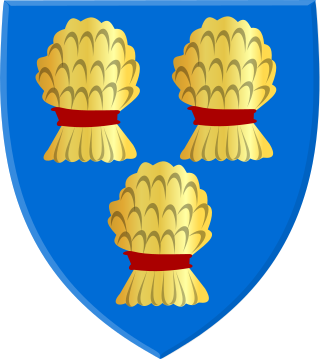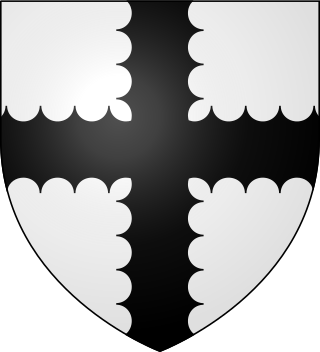This article includes a list of general references, but it lacks sufficient corresponding inline citations .(December 2022) |
Contents
Events from the 1290s in Scotland.
This article includes a list of general references, but it lacks sufficient corresponding inline citations .(December 2022) |
Events from the 1290s in Scotland.
1290
1291
1292
1295
1296
1297
1298
1299
Full date unknown
Full date unknown

The wars of Scottish Independence were a series of military campaigns fought between the Kingdom of Scotland and the Kingdom of England in the late 13th and early 14th centuries.

John Balliol or John de Balliol, known derisively as Toom Tabard, was King of Scots from 1292 to 1296. Little is known of his early life. After the death of Margaret, Maid of Norway, Scotland entered an interregnum during which several competitors for the Crown of Scotland put forward claims. Balliol was chosen from among them as the new King of Scotland by a group of selected noblemen headed by King Edward I of England.

John Comyn III of Badenoch, nicknamed the Red, was a leading Scottish baron and magnate who played an important role in the First War of Scottish Independence. He served as Guardian of Scotland after the forced abdication of his uncle, King John Balliol, in 1296, and for a time commanded the defence of Scotland against English attacks. Comyn was stabbed to death by Robert the Bruce before the altar at the church of the Greyfriars at Dumfries, once it had been declared that Comyn had more connection to King David of Scotland and therefore should be the next King of Scotland, not Robert.
When the crown of Scotland became vacant in September 1290 on the death of the seven-year-old Queen Margaret, 13 claimants to the throne came forward. Those with the most credible claims were John Balliol; Robert de Brus, 5th Lord of Annandale; John Hastings and Floris V, Count of Holland.

The First War of Scottish Independence was the first of a series of wars between English and Scottish forces. It lasted from the English invasion of Scotland in 1296 until the de jure restoration of Scottish independence with the Treaty of Edinburgh–Northampton in 1328. De facto independence was established in 1314 at the Battle of Bannockburn. The wars were caused by the attempts of the English kings to establish their authority over Scotland while Scots fought to keep English rule and authority out of Scotland.
Patrick IV, 8th Earl of Dunbar and Earl of March, sometimes called Patrick de Dunbar "8th" Earl of March, was the most important magnate in the border regions of Scotland. He was one of the Competitors for the Crown of Scotland.
Robert de Brus, 6th Lord of Annandale, jure uxoris Earl of Carrick (1252–1292), Lord of Hartness, Writtle and Hatfield Broad Oak, was a cross-border lord, and participant of the Second Barons' War, Ninth Crusade, Welsh Wars, and First War of Scottish Independence, as well as father to the future king of Scotland Robert the Bruce.

Robert V de Brus, 5th Lord of Annandale, was a feudal lord, justice and constable of Scotland and England, a regent of Scotland, and a competitor for the Scottish throne in 1290/92 in the Great Cause. He is commonly known as "Robert the Competitor". His grandson Robert the Bruce eventually became King of Scots.

The Guardians of Scotland were regents who governed the Kingdom of Scotland from 1286 until 1292 and from 1296 until 1306. During the many years of minority in Scotland's subsequent history, there were many guardians of Scotland and the post was a significant constitutional feature in the course of development for politics in the country.

Clan Bruce is a Lowlands Scottish clan. It was a royal house in the 14th century, producing two kings of Scotland, and a disputed High King of Ireland, Edward Bruce.

John Comyn, 3rd Earl of Buchan was a chief opponent of Robert the Bruce in the civil war that paralleled the War of Scottish Independence. He should not be confused with the better known John III Comyn, Lord of Badenoch, who was his cousin, and who was killed by Bruce in Dumfries in March 1306. Confusion between the two men has affected the study of this period of history.
Isabel Bruce was Queen of Norway as the wife of King Eric II.

Sir William Douglas "le Hardi", Lord of Douglas was a Scottish nobleman and soldier.

Sir Ingram de Umfraville was a Scottish noble who played a particularly chequered role in the Wars of Scottish Independence, changing sides between England and Scotland multiple times, throughout the conflict.

Alexander of Argyll, also known as Alexander of Lorne, and Alexander MacDougall, was a Scottish magnate from the late 13th and early 14th century.
Robert de Fyvie [also de Fyvin] was a prelate based in the Kingdom of Scotland in the last quarter of the 13th century. Perhaps coming from Fyvie in Formartine, from a family of Teesdale origin, Robert was Archdeacon of Ross and a student at the University of Bologna by 1269. In 1275, he was not only a graduate but the new Bishop of Ross, a post he held until his death in the first half of the 1290s.
Events from the 1290s in England.
The English invasion of Scotland of 1296 was a military campaign undertaken by Edward I of England in retaliation to the Scottish treaty with France and the renouncing of fealty of John, King of Scotland and Scottish raids into Northern England.
The following outline is provided as an overview of and topical guide to the Wars of Scottish Independence:

William St. Clair, 6th Baron of Roslin was a Scottish nobleman of the late 13th century.
{{cite book}}: CS1 maint: location missing publisher (link)